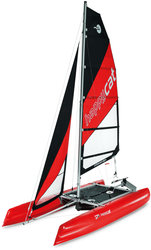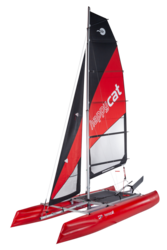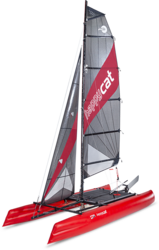


Frequently asked questions
Water safety
-
What are personal flotation devices (PFD)?
Personal flotation devices is only a headline for all kind of life saving equipment, which is worn on the body.
There are:
- Buoyant aids for swimming instruction
- Buoyancy aids
- Life Jackets
-
Why do buoyancy aids and life jackets have approximately 1/10 buoyancy only against the body weight of the wearer?
In water, each body generates own buoyancy. That is a reason why humans are able to swim in water.
The additional buoyancy provided by buoyancy aids and life jackets is dependant on the type and respective application of intended use for the swim aid or life jacket. Generally and on average that additional buoyancy varies approximately between 5 % and 15 % of the body weight.
-
What is the difference between 50 N buoyancy aids and life jackets?
The main difference between buoyancy aids and life jackets is that life jackets induce and support a stable supine body position on the water (respiratory organs above the water surface).
For that reason life jackets generally come with a collar and provided greater buoyancy than buoyancy aids. That allows somewhat reduced elbowroom for the wearer.
Buoyancy aids support a most neutral body position in the water, and normally provide less buoyancy than life jackets.
Buoyancy aids offer more freedom of movement for the user. -
What means of buoyancy are recommended for children?
-
Why may a life jacket be of different thickness at the chest area?
The manner by which the life jacket induces rolling into supine position can be influenced via body longitudinal or lateral axis.
To support rolling via the body longitudinal axis life jackets may be designed to have more buoyancy foam on one side of the chest area, than on the other side. -
Does a solid buoyancy material jacket be serviced?
There is no specific service prescribed, a visual inspection though periodically carried out is recommended.
- Is buoyancy foam apparent and in order? (not moved, not squashed)
- Do all fasteners function correctly?
- Are there damages to the covering fabric?
When in doubt, of course send the Grabner-jacket to the GRABNER company for inspection.
-
How often must an automatic-inflatable life jacket be serviced?
When commercially used, the first time after 2 years, thereafter annually.
Maximum period of use: 10 years.When privately used the same servicing plan is recommended (but is not mandatory)
-
What model shall I buy?
For every model information is given as to the purpose and intended use suited.
Choose the one that appears best suited for your application and appeals to you most.




















































